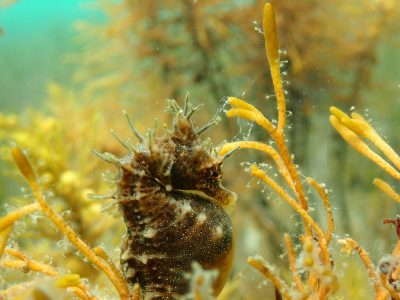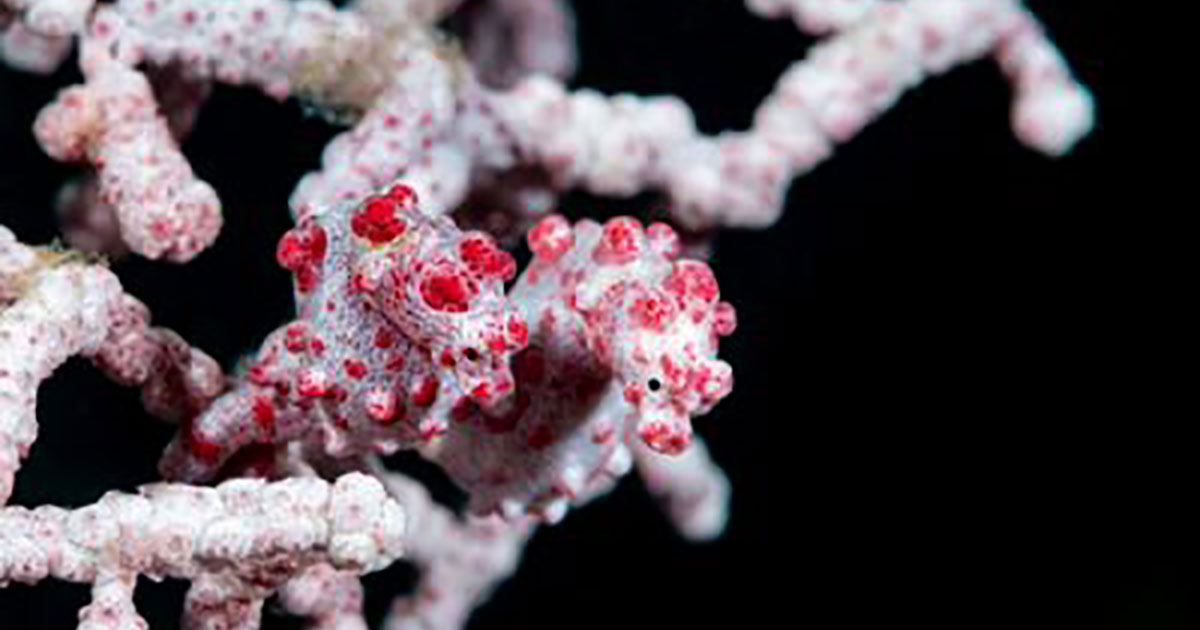Thanks to diligent observers, seahorses, those enigmatic and charismatic fish, are not only being discovered in new habitats and expanded geographic ranges, but they are also being found at new ocean depths. While their capacity for male pregnancy has long fascinated people, new information on sex ratio and pregnancy seasonality has been discovered by, well, you.
Researchers from Project Seahorse—a marine conservation team based at the University of British Columbia (UBC) and the Zoological Society of London (ZSL)—identified and reviewed new findings related to 35 of the 46 seahorse species found around the globe, all of them posted by citizen scientists using the team's iSeahorse program, part of the iNaturalist family.
The iSeahorse program allows community, or citizen, scientists—members of the public and non-professional or amateur researchers—to provide information about their sightings of seahorses in the wild. Posting on the website, they provide information about which species of seahorse, when and where in the world they saw it, its habitat, and its depth. They are also asked to provide photographic evidence if they are able.

Diver logging encounter with seahorse. (Image credit: João Rodrigues)
Undertaking an analysis of 7,794 validated iSeahorse observations from 96 countries and across 35 seahorse species, posted from October 2013 to April 2022, researchers were impressed by the information they gained and its effect on knowledge about seahorses.
"The new findings will enhance global conservation assessments of the species in the world's definitive IUCN Red List of Threatened Species," said Elsa Camins Martinez, then a MSc student at UBC's Institute for the Oceans and Fisheries and first author on the paper.
Camins pointed to contributed observations on Coleman's pygmy seahorse (Hippocampus colemani), which indicated that its geographic range is thousands of square kilometers larger, its habitat more diverse, and its depth range shallower than previously known. Many of the observations of Hippocampus satomiae were also outside the range reported in the IUCN Red List, suggesting that their range is considerably larger than previously understood.
"Comparing habitat types reported in iSeahorse with those in the IUCN Red List assessment for each species, we found new habitats for 80 per cent of species," said Dr. Amanda Vincent, UBC Professor, Co-Founder and Director of Project Seahorse, as well as senior author on the research. "We found new habitats for Hippocampus comes, Hippocampus histrix, H. kuda, Hippocampus kelloggi, and Hippocampus spinossisimus, each with five to six new habitats."
"It was fascinating that the iSeahorse data extended the known breeding season for five species," added Camins. "In the tropics, seahorses were reported as breeding in every month. Surprisingly, this was also true in the Northern Hemisphere Asian species, although with more breeding in the spring."
Dr. Vincent is proud of the iSeahorse website. "We reached out to observers in Southeast Asia, Australia, the Caribbean, and Europe—areas with high diving activity—and benefited greatly from being part of the iNaturalist portfolio. As the first biologist to conduct research on seahorses underwater, I am excited how the information provided by participants is helping expand our understanding of the many species. Even for a commonly studied species, the tiger tail seahorses (Hippocampus comes) iSeahorse observations came from outside the IUCN Red List range, with new discoveries in Thailand and Indonesia."

Shorthead Seahorse (Hippocampus breviceps) Observation. (Image credit: Josie Jones)
"With the assistance of our community contributors, we were able to gather information on a much broader scale," says Heather Koldewey, co-founder of Project Seahorse, ZSL's Senior Marine Technical Advisor, and co-author on the paper. "This study has demonstrated the value of community science in advancing seahorse knowledge, by helping bridge gaps. Seahorses are very much the sort of fascinating species that benefit from community science, as they are cryptic enough to make even formal research challenging. The results from all these efforts show the importance of promoting marine community science and the important role it can play in conservation, by generating knowledge and mobilizing engagement and action."
Project Seahorse
Project Seahorse is a leader in marine conservation, making discoveries & and collaborating globally to take effective action for seahorses and their seas. The organization cares for seahorses as flagship animals, conducting cutting-edge research on protected areas, fisheries, and wildlife trade…, and applying the new knowledge to produce highly effective conservation interventions. Project Seahorse has won many international awards and honors, and works with researchers, governments, conservation groups and local communities worldwide. Project Seahorse is based at the University of British Columbia, Canada, and Zoological Society of London, UK.



